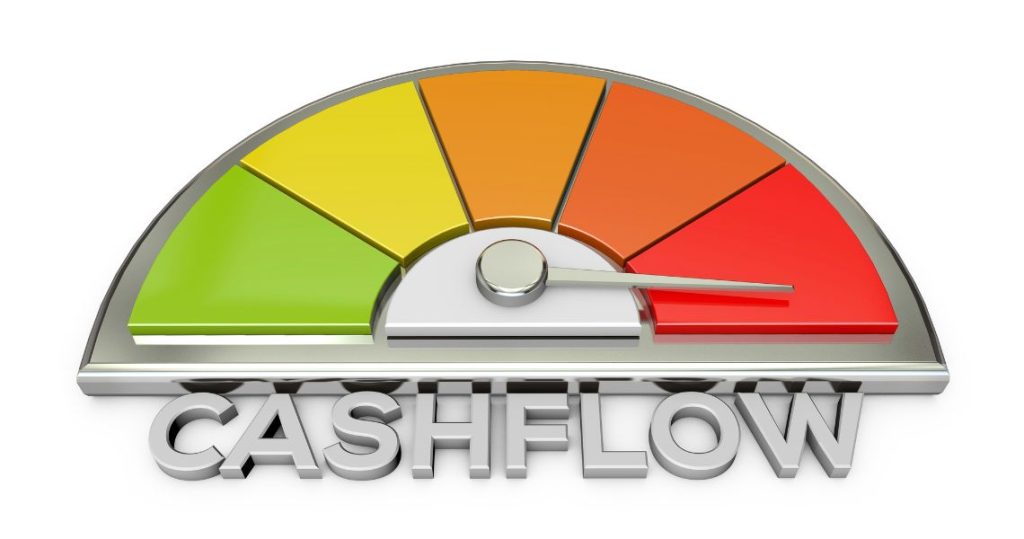
Book a Free Consultation!
✅Builders CFO Program
✅Business Improvement Program
✅Taxation Advice

Feel your cash flow is a little tight?
You’re not alone, with 35% of SMBs reporting a decline in revenue and 63% losing revenue from late payments alone. Industries that have often been stable are also starting to wobble, resulting in companies in traditionally ‘safe’ sectors going under. Add in the ATO cracking down on unpaid debts, and Australian business is under a lot of strain.
While these bigger impacts are very real, the burning question on your mind: How did it go from cash flow to cash trickle so quickly?
As business advisors, we hear this question a lot. Especially with new business improvement program clients! But the warning signs aren’t always obvious, and can be hard to spot when you’re busy running your business day to day.
Below our business advisors John Pititto and Shaun Borgshare some cash flow warning signs to watch for and how you can avoid the cash flow pinch.
How to know your cash flow could be in crisis
After working with hundreds of businesses and builders, here are common warning signs we see that could mean your cash flow is taking a negative turn.
There’s never enough cash in the bank
No matter how much money comes in, when it comes to paying bills, employee wages or other expenses cash is always a little tight. You might be able to get by, but it’s starting to keep you up at night or impacting the speed at which you make decisions.
You find yourself in cash flow paralysis until invoices are paid
Cash flow paralysis – feeling unable to make business decisions, payments or progress work until new money comes in – can have major impacts on day to day business. This could look like consistently delaying paying bills until money comes in or being late with payroll to avoid cash flow getting too low. For project-based industries like building and construction, this could have even bigger impacts – from being unable to buy building supplies, delaying schedules, or sending home trades until the payment is processed.
Emergency funds or personal funds are keeping you afloat
While we recommend having a business savings account for unexpected events and expenses, relying on these funds is a sign of bigger cash flow issues. Especially if you’re unable to replace these funds over time.
As business owners, a simple solution might seem to ‘top up’ shortfalls with our own money. But this is a dangerous habit to get into. It not only puts your personal assets at risk but that money becomes company debt.
You struggle to pay suppliers and bills on time
What may have started as delaying payments a few days every now and then has now spiralled into a monthly pattern. Your suppliers or vendors might not be chasing you (yet), but you are consistently late due to cash flow fluctuations, invoices being paid late, or because your profitability is decreasing.
Business debt is slowing climbing
Credit cards and short-term loans can have their benefits, but they soon become a disadvantage when it’s the only way you can get by. That money needs to be paid back, resulting in any income coming in quickly going to repayments. Not to mention the interest that comes with it!
All your cash is tied up in inventory or stock
While it’s great to have stock on hand, in reality it’s cash tied up on the shelf. Until it’s used or sold, you’re not making money. You could also be losing money with additional warehouse, insurance and management costs. Adding discounts or slashing margins might help you move it, all you’re doing is eating into your profits.
5 strategies to get your cash flow back on track
1. Set-up financial and forecasting reports
When you know exactly what money is where – and when it’s coming in – you can make more informed decisions. As business advisors, we recommend reviewing financial reports monthly. This allows you to monitor your cash flow more easily and proactively make changes if required. Coupling this with cash flow forecasting, you can better understand cash flow needs in the future and put strategies in place to make sure you’re covered.
2. Review and optimise invoice processes
It might seem like a simple strategy, but it’s so easy to overlook. The sooner you can invoice, the sooner you can get paid. But often manual invoicing processes, slow approval processes, disconnected operations, or lack of processes all together can hinder how quickly you get invoices out the door.
Here, accounting software such as Xero or MYOB can streamline the invoicing process and reduce manual errors. Another area to consider is defining invoice and project processes. By having a set process in place, you can:
- Unlock team efficiencies
- Decrease time delays between delivery and invoicing
- Optimise invoice processing time
- Improve team communication
- Boost invoice payment times
3. Identify cash flow risks
By understanding where your biggest cash flow risks are, you’re able to proactively put strategies in place to minimise their impact or remove them entirely. You’re also able to move more quickly if they occur.
Conducting a risk assessment also has another benefit — often managing the risk uncovers opportunities for efficiencies and growth. It’s this very reason we conduct regular risk reviews with our business improvement program clients.
> Take our risk assessment now
4. Regularly review pricing and margins
With the cost of business, supplies and services increasing, we recommend reviewing your pricing at least once every six months. This means, reviewing what it costs you to operate your business and adjusting your pricing accordingly. Even increasing pricing by 2% to 4% over time can have big impacts on your gross and net profit margins. For building and construction businesses, this rule also applies to project margins even if it is by 1%.
Negotiating set or reduced pricing with your suppliers can also help you improve your profit margins and avoid price fluctuations. > What’s the difference between gross and net profit?
5. Forecast inventory needs
Forecasting materials or stock requirements not only helps control your inventory, but also has cost benefits. Knowing what you need when, you’re able to buy when the price is right, seek out more competitive pricing, and gain more buying power with suppliers. You’ll also avoid overspending on unnecessary stock, linking expenses directly to upcoming projects or customer needs.
When it comes to building and construction projects, forecasting can avoid project delays – ensuring materials are on site when required – as well as reduce supply chain risks.

Send To Someone